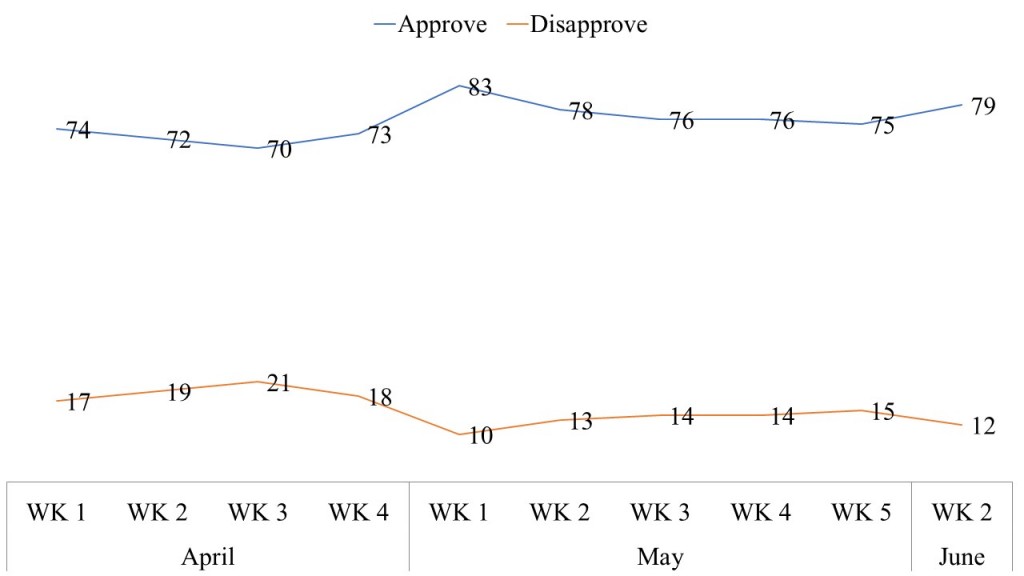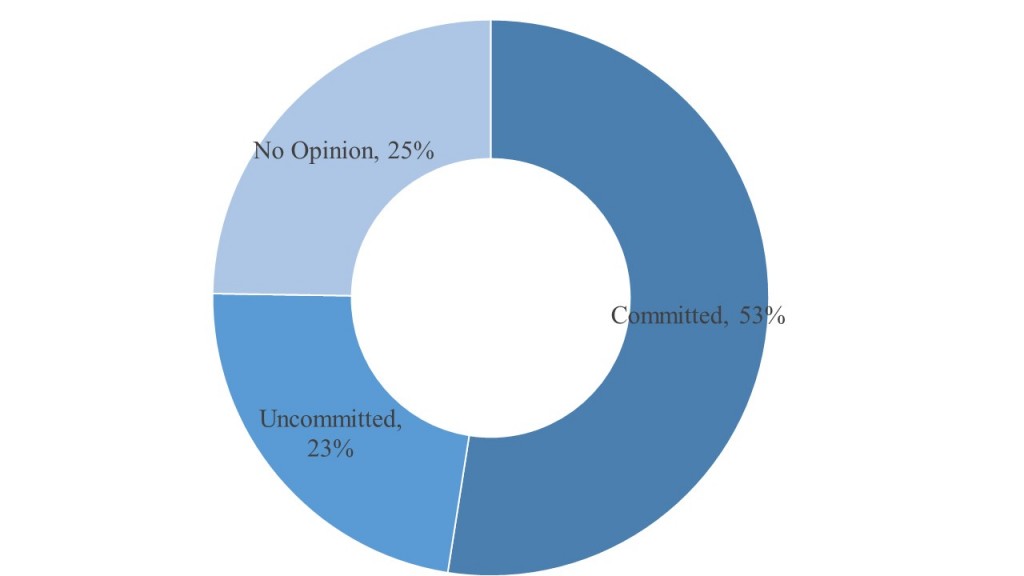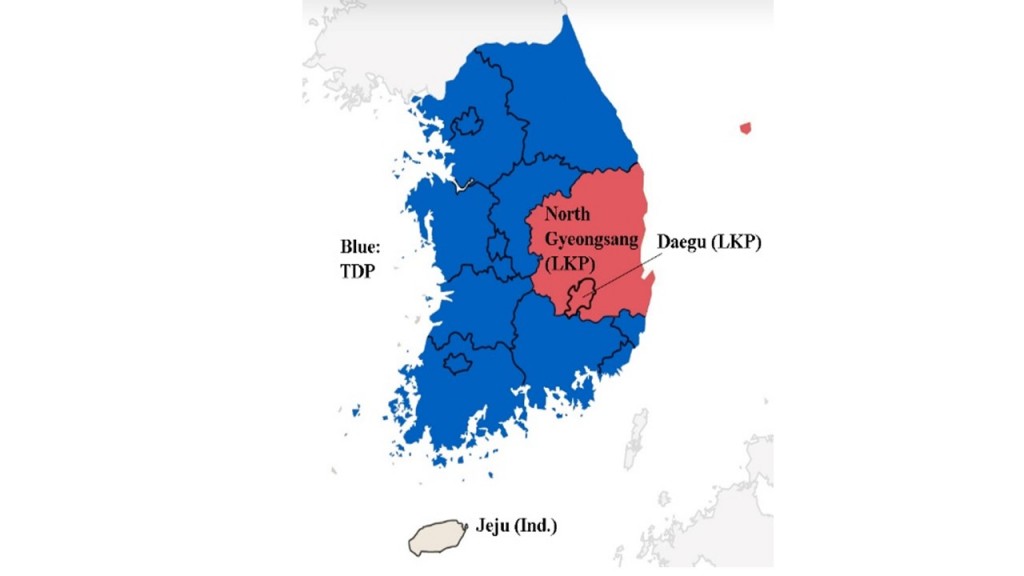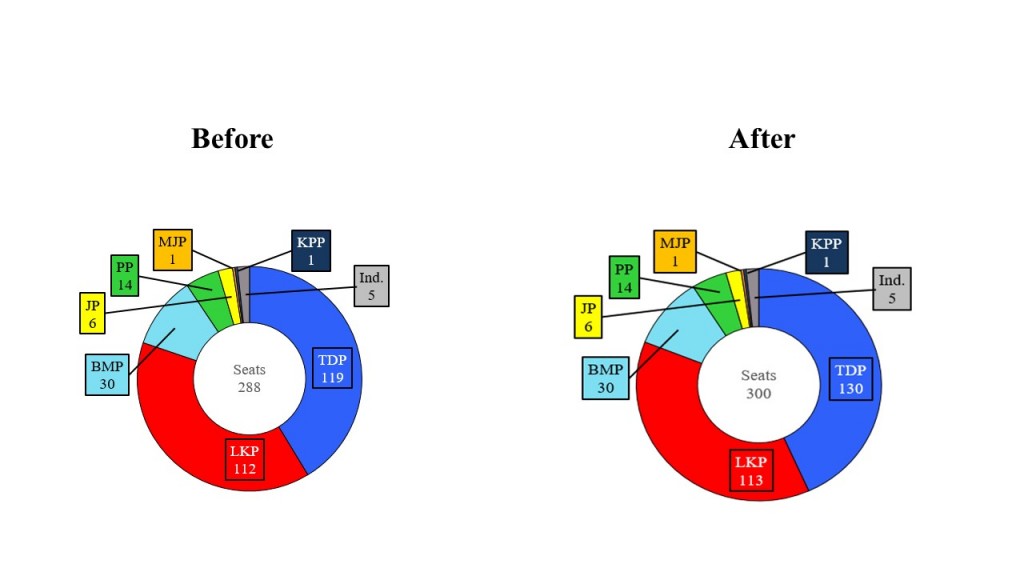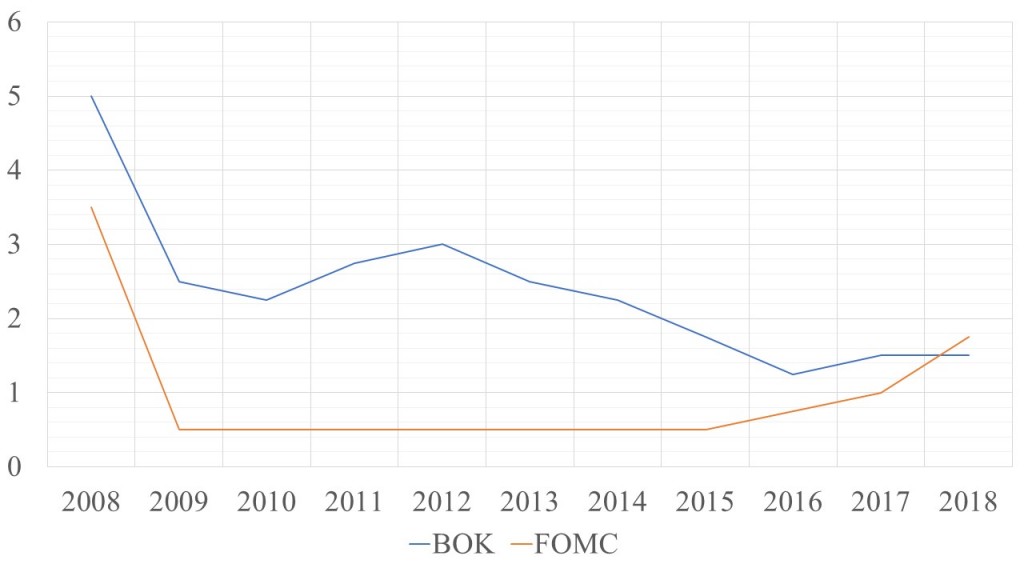The US-DPRK Summit
On June 12, US President Donald J. Trump and North Korean leader Kim Jong Un held the first ever summit. The two leaders signed a joint statement that consisted of four main parts: 1) new US-DPRK relations; 2) peace on the Korean peninsula; 3) reaffirmation of the Panmunjom Declaration; and 4) return of the POW/MIA remains.
Expectations in South Korea was very high with viewer rate reaching 26.53% during the live broadcast of the joint statement signing.[1] Following President Trump’s press conference, the Blue House released President Moon’s official statement congratulating the success of the historic meeting between the two leaders.[2]
Majority of the South Koreans believe that the summit holds great significance. But many were also disappointed by the substance of the joint statement. Before the summit, many pundits, including conservative parties, have repeatedly emphasized the importance of CVID.[3] For instance, the Bareunmirae Party issued a public letter to President Trump and Kim highlighting the importance of this issue.[4] Experts point out that the exclusion of CVID in the joint statement is a concern. Some argue that President Trump conceded too much to Kim. Others claim that the joint statement was very vague compared to other past agreements with North Korea.
One major concern involves President Trump’s statement regarding the suspension of the joint military exercise. Discussions are already underway as to whether Ulchi Freedom Guardian (UFG) will be carried out in August as scheduled. The Ministry of National Defense said it would discuss the matter with the US.[5] On June 14, President Moon announced that he would consider halting the joint military exercises if the talks between the US and North Korea continue.[6]
Experts point out that halting the joint military exercise could weaken readiness and possibly lead to the withdrawal of US troops from South Korea.[7] They claim that the situation in the Korean peninsula has become more tenuous for South Korea than before the summit.[8]
However, others caution against jumping to conclusions as the outcome of the summit would depend on follow-up meetings. Some suggest that the “firm and unwavering commitment to complete denuclearization of the Korean Peninsula” implies North Korea’s acceptance of the verification process.[9]
Support for President Moon rose to 79 percent, a four-point increase. This could be explained by the public’s overall support for the US-DPRK summit as well as President Moon’s role in facilitating that meeting.
President Moon’s Approval[10]
Views on US-North Korea Summit[11]
Views on North Korea’s Commitment to the Joint Statement[12]
The 7th Local Election
On June 13, South Koreans went to 14,134 polling stations from 06:00-18:00 to cast their votes in the 7th local election.[13] Early voting took place on June 8~9. A total of 4,016 local administrative, legislative and educational chief posts were in contention. Voter turnout was 60.2% (42,907,715) which was an all-time high after 1995. Early voting was also high at more than 20%.[14] By region, South Jeolla had the highest turnout with 69.3%, while Incheon had the lowest (55.3%).
Voter Turnout (1995-2018)
Source: Naver News
Voter Turnout by Region
Source: National Election Commission
Exit Polls
Ahead of the local election, most predictions leaned in favor of the TDP. In the exit poll data collected by KBS, MBC, and SBS,[15] 14 TDP, one LKP, and one independent candidates were expected to win major provincial and mayoral seats. In the by-elections, the TDP was also projected to gain 10 seats while the LKP was expected to win one.
Results
There were no surprises as the TDP recorded a landslide victory. The TDP candidates won 14 out of 17 major provincial and mayoral seats, while the LKP won only 2 (BMP: 0, independent:1).
Source: National Election Commission
The LKP barely managed to hold their political stronghold in North Gyeongsang and Daegu. Busan, Ulsan, and Gangnam flipped in favor of the progressives.
National Assembly
The TDP also swept the by-election. Out of 12 vacant seats in the National Assembly, the TDP won 11 while the LKP managed to gain one. The TDP now controls 130 seats in the National Assembly while the LKP occupies 114 (BMP: 30, PDP: 14, JP: 6 MJP: 1, KPP:1, independent: 6).[16]
Seats in the National Assembly[17]
The results from the local election is expected to provide momentum for President Moon’s progressive agenda and also catalyze major changes in the conservative opposition. Shortly after the election, the LKP chairman Hong Jun-pyo took responsibility for the poor showing and stepped down from his position. Yoo Seong-min also resigned from his leadership role at the Bareunmirae Party. There is likely to be a major remake of the conservative party as the people are demanding a fundamental change.
Public Response
Many welcomed the election results. Observers believe that the outcome was the result of public fatigue over the conservative parties. Some argue that the conservatives have failed to address the fundamental problems of socioeconomic inequality.[18] Pundits claim that national politics dominated by a single party could pose challenges for South Korea’s democracy and the system of checks and balances.[19]
Interest Rate
The US Federal Reserve released a statement on Jun 13 to raise the target federal funds rate to 2%.[20] On Jun 14, the Bank of Korea (BOK) stated that it would maintain its base rate of 1.5% since it did not expect the FOMC increase to have a large impact on the domestic economy. It bears mentioning, however, that this is the first time in 10 years that the BOK’s base interest is above that of the FOMC. The rate difference between the US and Korea now stands at 0.5%.[21]
BOK v FOMC base rates, 2008-2018
Source: BOK and Federal Reserve
Employment
During the first meeting of the newly established Economic Ministerial Meeting for Innovation, the government announced that it would enact a plan, entitled the “Innovative Employment Stabilization Model”, which would seek employment growth through accelerated innovation rather than income growth. The government has designated electric/hydrogen vehicles and charging stations, and drones and smart farms as strategic industries to receive flexible financial support.[22]
Investor-State Dispute
On Jun 6, Korea lost its first investor-State dispute (Mohammad Reza Dayyani and others v. the Republic of Korea, 2015). The claim arose from the termination of an agreement with Entekhab (Iran) by Korea Asset Management Corporation, a public institution, for the sale of a majority stake in Daewoo Electronics. Entekhab filed for arbitration for the non-return of a 10% down payment (USD 50mn) before the termination of the contract, which the Iranian industrial company deemed was a violation of the Iran – S Korea, BIT (1998).[23] The Tribunal decided that Korea had to compensate Entekhab KRW 73bn (USD 68.1mn), to which the government responded by announcing on Jun 7 that it would be examining options to revoke the arbitral award through the London Court of International Arbitration (LCIA).[24] The government, in exploring this option, has not shared any details regarding the challenge or about the arbitral decision itself. This has been subject to criticism given the ongoing deliberation regarding Korea’s first ISDS case against Lone Star Funds.[25]
Investor-State Dispute
|
Case Name |
Outcome |
Year |
|
LSF-KEB Holdings SCA and others v. the Republic of Korea |
Pending | 2012 |
|
Hanocal Holding B.V. and IPIC International B.V. v. the Republic of Korea |
Discontinued |
2015 |
| Mohammad Reza Dayyani and others v. the Republic of Korea | Decided in favor of investor |
2015 |
Source: UNCTAD Investment Policy Hub
“Korea First” in Trade?
The Minister of Trade, Industry and Energy (MOTIE) Paik Un-gyu stated on Jun 8 that the government intends to take a “Korea First” approach to unfair import restrictions by actively engaging the World Trade Organization (WTO)’s dispute settlement body.
WTO DSB Cases with S Korea
|
Cases Brought Against Korea as Respondent |
Cases Initiated by Korea as Claimant | ||
|
Country |
Number of Cases | Country | Number of Cases |
| Australia | 1 | Philippines |
1 |
|
Indonesia |
1 | Japan | 2 |
| Japan | 2 | EU |
3 |
|
Canada |
2 | USA | 14 |
| EU | 4 | ||
| USA |
6 |
||
Minister Paik stated that the government intended to stand with the private sector in responding to changes in the trade environment. MOTIE identified global steel production overcapacity, rising trade protectionism and stagnating demand as three underlying reasons for why the government had to intervene.[26]
[1] “[북미정상회담]트럼프-김정은 합의문 서명 시청률 26.53%(종합)”, 연합뉴스, 2018년 6월 12일.
[2] [The Blue House official website, available at: https://www1.president.go.kr/articles/3551 ]
[3] “[사설] 오늘 미·북 회담, ‘단기간 내 CVID 북핵 폐기’ 나와야 한다”, 조선일보, 2018년 6월 12일.
[4] [Bareunmirae Party’s official website, available at: http://bareunmirae.kr/kr/news/comment.php?bgu=view&idx=8482 ]
[5] “국방부, ‘8월 UFG 중지’ 여부 “한미간 긴밀협의 중””, 연합뉴스, 2018년 6월 14일.
[6] “文 대통령 “북미대화 지속하면 한미훈련 중단 신중 검토””, 중앙일보, 2018년 6월 14일.
[7] “[사설] 북·미 정상회담 이후 더 불안해진 한반도 안보”, 중앙일보, 2018년 6월 14일.
[8] “[사설] 트럼프·문재인·김정은 체제 속 한국 안보는 어디로 가나”, 조선일보, 2018년 6월 14일.
[9] “트럼프, 명분 주고 실리 챙겼나… 비핵화 추가조처 약속 받은듯”, 한겨레, 2018년 6월 14일.
[10] Gallup Korea, Date: June 14; sample size: 1,007; margin of error: +3.1 at the 95% confidence level.
[11] Ibid.
[12] Ibid.
[13] “Ruling party wins elections by landslide”, Korea Joongang Daily, 2018년 6월 14일.
[14] “6·13 지방선거 사전투표율 20% 돌파···역대 두 번째”, 경향신문, 2018년 6월 9일.
[15] Margin of error: +3.2~4.0%p at the 95% confidence level.
[16] “범여권 안정적인 과반 의석 확보… 하반기 국정 ‘개혁 드라이브’ 예고”, 한국일보, 2018년 6월 14일.
[17] BMP: Bareunmirae Party; JP: Justice Party; PDP: Party for Democracy and Peace; MJP: Minjung Party; KPP; Korea Patriots Party
[18] “나도 보수지만 한국당 폭망해라…그게 민심이었다”, 중앙일보, 2018년 6월 15일.
[19] “[사설] 궤멸된 보수정치 … 책임과 희생이 재건의 출발점”, 중앙일보, 2018년 6월 15일.
[20] “Federal Reserve issues FOMC statement”, Press Release, 2018년 6월 13일, Federal Reserve. Available at: [https://www.federalreserve.gov/newsevents/pressreleases/monetary20180613a.htm]
[21] “이주열 ‘미 금리 인상, 국내 영향 크지 않을 것··…신흥국 금융 불안이 변수’”, 경향비즈, 2018년 6월 14일.
[22] “김동연 ‘산업·노동 규제혁신 돌파구 석달내 찾겠다’”, 한겨레, 2018년 6월 8일.
[23] “Dayyani v. Korea”, Investment Policy Hub, UN Conference on Trade and Development. Available at: [http://investmentpolicyhub.unctad.org/ISDS/Details/679].
[24] “한국, 투자 관련 ‘국가소송’ 첫 패소”, 조선일보, 2018년 6월 8일.
[25] “[연합시론] 정부, ISD 첫 패소 이유 밝혀야”, 연합뉴스, 2018년 6월 11일.
[26] “백운규 장관 ‘불합리한 수입규제에 WTO 제소 등 적극 대응’”, 경향비즈, 2018년 6월 8일.
Contributing Staff: Hahm Geon-hee, Kim Seonkyung, Lee Soo-hyun
Editor: J. James Kim

 Facebook
Facebook Twitter
Twitter